Contract Fragmentation: Avoiding Data Silos When Integrating CLM with ERP and CRM Systems
In today's fast-paced business environment, contracts are the foundation of almost every operation-from vendor relationships and customer contracts to regulatory compliance and financial obligations. Yet, as companies are going digital, there is a lingering problem that many of them are not even aware of: Contract Fragmentation. That is, contract information is fragmented and disjointed across systems, spreadsheets, shared drives, or even paper file folders, and it gives teams only a partial and disparate view of key information.
The advent of advanced solutions like Contract Lifecycle Management (CLM), Enterprise Resource Planning (ERP), and Customer Relationship Management (CRM) systems has enabled organizations with unparalleled opportunities. However, left to their own devices, these systems have the paradoxical consequence of exacerbating the very same issue they were meant to mitigate. Rather than working from a single well of truth, organizations tend to be plagued by data silos-disparate bits of information that result in inefficiency, late deadlines, compliance risks, and poorly educated decisions.
Take, for example, the sales team closing a big deal within the CRM. While it monitors opportunity stages and customer information, the finance department would handle invoices and budgets in the ERP, and the legal department would handle contract writing and approvals in a CLM product. Without shared modeling, the departments work independently, duplicating effort and potentially getting misaligned. Deadlines are missed, compliance requirements fall between the cracks, and management is unaware of the organization's aggregate risk and revenue exposure.
This divergent reality is the reason why integrating CLM with ERP and CRM systems is no longer optional, but a strategic imperative for organizations to stay competitive, compliant, and customer-centric in a more complex market.
Breaking Down the Barriers: Why Integration Matters
To understand why integration is crucial, one needs to examine first what causes fragmentation. Businesses usually encounter incompatible data structures, poor data quality, ineffective APIs, organizational resistance, and.webp?width=300&height=300&name=Untitled%20design%20(45).webp) misaligned workflows. All these lead to a fragmented system whereby significant contract details are kept apart from the very same teams that require them most.
misaligned workflows. All these lead to a fragmented system whereby significant contract details are kept apart from the very same teams that require them most.
For example, ERP systems are designed for back-office functions such as finance, HR, supply chain management, and procurement, while CRM products are targeted at customer-facing functions such as sales, marketing, and customer service. Contract Lifecycle Management (CLM) system deals with compliance, legal correctness, and contract execution. Without integration, the sales team is able to close sales faster but may not pass on key terms to procurement, and finance cannot possibly predict revenue since the renewal dates are not synchronized across systems.
The solution lies in creating a single, unified source of truth where contract data flows seamlessly across all systems. Since CLM properly integrates with ERP and CRM systems, organizations can provide real-time data synchronization, enhanced visibility, and end-to-end visibility into all business relationships. Contracts no longer sit alone but are rather transformed into actionable data assets that inform decision-making throughout the organization.
A successful integration plan helps companies to:
- Improve data accuracy and reliability, ensuring reports and analytics reflect the true state of the business.
- Enable cross-functional collaboration, connecting legal, sales, procurement, and finance on shared goals.
- Automate and eliminate manual tasks and bottlenecks, freeing up employees to focus on strategic initiatives.
- Strengthen compliance and risk management by centralizing tracking of obligations, milestones, and renewals.
- Deliver a better customer experience, since sales and service teams instantaneously access contract information with zero latency.
In essence, integration not only prevents fragmentation but also transforms contracts into living business assets that drive growth and efficiency.
Building a Unified Ecosystem: Strategies to Avoid Contract Fragmentation
Arriving in seamless integration requires a well-outlined plan. Mere interfacing systems through APIs or middleware.webp?width=400&height=400&name=Untitled%20design%20(46).webp) is not sufficient; businesses need to shift the manner in which they approach data management, workflows, and processes. The following solutions offer a template for success.
is not sufficient; businesses need to shift the manner in which they approach data management, workflows, and processes. The following solutions offer a template for success.
- Plan for Comprehensive Data Mapping and Integration
Prior to integration, an audit of data needs to be done in order to determine duplicate, missing, or erroneous records. Without it, integration has the ability to compound inherited errors. Field mapping between data in systems provides uniformity, e.g., correlating a "Contract Start Date" in CLM with an "Effective Date" in ERP. Good APIs or iPaaS (integration platform as a service) tools are able to manage complicated data flows with scalability and security.
- Create a Single Source of Truth
Storage of contracts in a single repository ensures that all departments view the same version of information. Real-time synchronisation between CLM, ERP, and CRM eliminates discrepancies and gets all teams together on one page. For further driving consistency, companies need to apply master data management (MDM) practices, which impose standardised contract data requirements on the entire enterprise.
- Foster Cross-Functional Collaboration
Integration is as much a people exercise as a technology exercise. To have the sales, finance, procurement, and legal aligned with each other, there must be clear handoffs and lines of communication. For instance, when a contract attains a certain stage in the CRM, drafting can be automatically triggered through the CLM system. Role-based security provides that critical information is secure but viewable on a need-to-know basis across departments. Dashboards and reporting also promote collaboration by the ability to view customers and contracts in 360-degree view.
- Automate and Streamline Workflows
Automation minimizes human error and speeds up processes. Standalone libraries and templates ensure compliance and save drafting time for legal teams. Automated reminders of key milestones-renewals or payment-reduce the chances of missed obligations. Future-generation CLM platforms also include AI-powered analytics for risk analysis, compliance verification, and clause suggestions, lowering manual effort further while contract quality improves.
- Integrate ERP and CRM Beyond Surface-Level Functions
Though most businesses implement CRM and ERP separately, the true benefit is derived when all three systems operate as one. CRM deals with customer dealings, ERP deals with back-office functions, and CLM deals with the terms that hold them together. Integration is the idea that when a sales representative closes a sale in the CRM, the ERP is automatically able to update financial forecasts, and the CLM will produce contracts with pre-approved terms-all in real time.
Through the implementation of such strategies, companies can shift away from siloed, fragmented systems to a fully connected ecosystem where contracts drive operational excellence.
The Rewards of a Cohesive Integration Strategy
With CLM, ERP, and CRM systems integrated, the payoff exceeds efficiency. Businesses gain the ability to forecast revenue more accurately, manage resources more strategically, and deliver superior customer experiences..webp?width=300&height=300&name=Untitled%20design%20(47).webp) Sales close quickly with confidence that contract terms are right. Finance organizations enjoy precise visibility into obligations and cash flow. Legal teams reduce compliance risk while optimizing cycle times.
Sales close quickly with confidence that contract terms are right. Finance organizations enjoy precise visibility into obligations and cash flow. Legal teams reduce compliance risk while optimizing cycle times.
Data silos are replaced with real-time insights that inform improved decisions. Customer relationships become stronger since teams are able to act and react quickly and contextually, with the entire history of agreements and obligations within reach. Operational expense declines, productivity improves, and organizations are able to grow without losing efficiency.
Most importantly, this integration puts contracts not as mere pieces of paper but as dynamic business assets-driving strategy, compliance, and growth.
The advantages extend also to long-term competitiveness. Organizations that adopt integrated ecosystems have a greater likelihood of evolving with shifting regulations, economic upswings and downturns, and changing customer needs. They can identify trends across contracts-what words are tying up negotiations or what vendors are always late, allowing leaders to take risks seriously before they do. By aggregating information between CLM, ERP, and CRM, organizations get predictive insights that allow them to anticipate difficulties before they arise. This intelligence-driven approach transforms contract management from a reactive to a proactive engine for innovation and resilience.
For growing businesses, integration ensures that systems respond with ease as volumes of contracts and customer bases increase. Rather than piecing together workflows, organizations can rely on automation and centralized data to manage growing complexity. In the end, cohesive integration does not merely prevent fragmentation-it creates a foundation for sustainable growth and market leadership.
Final Thoughts
Contract fragmentation is a hidden obstacle to most organizations, but it may end up undermining compliance, efficiency, and customer trust. Fortunately, with the right strategies, it can be eliminated. Convergence of CLM with ERP and CRM systems provides the foundation for a single, cohesive ecosystem where data flows effortlessly, teams function harmoniously, and businesses operate confidently.
The issue for managers today is no longer whether to integrate but how quickly they can move. In a competitive economy where mistakes of compliance and inefficiencies cost money, integration is not just a technical enhancement-it is a business investment in the future.
Visionary companies recognize that integration also creates cultural transformation. With communities of employees working under one system of truth, silos are not only flattened technologically but operationally as well. Collaboration is the norm, not the exception, and employees are more assured that the data they work on each day is trusted. This cultural shift is sometimes as valuable as the technical benefits, bringing a workplace that is more responsive, transparent, and resilient.
Looking ahead, integration will be a linchpin in enabling AI-driven decision-making, analytics, and autonomous compliance monitoring. Businesses that take on integration now will be in a great position to leverage these technologies later, whereas businesses that are clinging to piecemeal processes risk becoming obsolete. The reward is not just to address problems of the day, but to set themselves up to reap the benefit of tomorrow's innovation. By stopping fragmentation now, organizations position themselves for success in a more digital, data-driven economy.
Is your business ready to eliminate contract fragmentation and unlock the full value of your contracts?
With Dock 365's CLM solution, on top of Microsoft 365 and SharePoint, your company can enjoy seamless integration with ERP and CRM applications, giving you a centralized repository for all contracts.
Schedule a free demo with Dock 365 and see how our CLM can transform your contract management process.
Book a Live demo
Schedule a live demo of Dock 365's Contract Management Software instantly.
.jpg?width=1260&height=1205&name=Image%20(2).jpg)
Written by Fathima Henna M P
As a creative content writer, Fathima Henna crafts content that speaks, connects, and converts. She is a storyteller for brands, turning ideas into words that spark connection and inspire action. With a strong educational foundation in English Language and Literature and years of experience riding the wave of evolving marketing trends, she is interested in creating content for SaaS and IT platforms.


